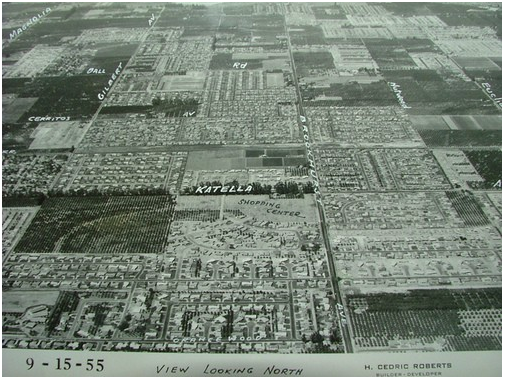The Poet Runs the Home Stretch: Grant Hier's Tended, Untended Garden of Reconciliation
- Dec 14, 2018
- 6 min read
By ANDREW TONKOVICH | MARCH 29, 2015
This image of an old aliso (sycamore) tree, in fact the singular old arborial totem for our region is a rendering which relies on the human hand, with the mind filling in both the details of what passes for reality and of course, heavily, on the experience of the illustrator. The huge now long-gone "Council Tree" once living, thriving, occupying a large piece of land in Yangna, a Tongva village now called Los Angeles and, yes, in the imagination, speaks symbolically, metaphorically just fine on its own, but of course we humans like to chime in, calling attention not only to the tree but to ourselves, talking about it, living under its stout branches, using it as did the Tongva people once, not so long ago, as a geographical landmark and marker of their own proximity, to each other, to the tree, to the universe of Southern California.
You can find a photograph circa 1850 of the old plaza area of LA at the end of a book of new poetry by Grant Hier of Anaheim, a book that is one long, lovely poem in which the evocation of this giant if absent sycamore tree, trees, rivers, deserts, backyards and the humans who have seen and lived with these is meant to cause us to re-appreciate the story of them in this place, and its teller's own story too.
Which is why that photograph, along with other old photos, other documentary evidence, archives of the Native past, of floods and artifacts are so especially, well, cool after (and during) reading of the 92 pages of the poem, spread across the page in parallel vertical columns, each indicating the chronology referenced, each section speaking to the others as well, of course, as to us. The various gestures of appreciation, of care and carefulness seem built-in to this re-examination of Self and selves and the psycho-geography of memory, one which will be favorably compared to writing by DJ Waldie, Mike Davis, Susan Suntree and others who have simultaneously immersed themselves in the landscape but also exercised some distancing, scholarly authority, become reliable docents on their tour of our ecosystem and, significantly, the ethnographic story.
...this re-examination of Self and selves and the psycho-geography of memory, one which will be favorably compared to writing by DJ Waldie, Mike Davis, Susan Suntree and others... perhaps done more artfully than the prose writers but with the same eye for accuracy and fairness, with documents and footnotes and cross-referencing; something, as they say, for everybody.
Yes, there is a lot to tell, and a lot going on here – poetry, human history, natural history, memory, autobiography – all of it ending up in a kind of mini-epic journey (or quest) narrative. Untended Garden: Histories and Reinhabitation in Suburbia, took Grant Hier a couple of decades to revise and complete, writing on and off, but it just won the prestigious Prize Americana from the Poetry Press, a project of the Institute for the Study of American Popular Culture.
This prize means a lot to any poet, but perhaps even more to Hier, (pronounced “higher”) whose ambitious if completely satisfying poem seems in its Whitmanic style pretty darn unlikely for a local boy from Anaheim, California, Orange County, USA of all places. But, yes, Hier has completed the home stretch, creating a literary document which will take its place alongside other So Cal recollections, memoirs, reminiscences of the region, if perhaps done more artfully than the prose writers but with the same eye for accuracy and fairness, with documents and footnotes and cross-referencing; something, as they say, for everybody.
The story of the story here is that Hier's parents raised little Grant in the house they bought a half-century ago, on land less developed than today, planted trees and grew a garden and all these years later Hier still lives (thrives!) in that modest ranch-style suburban tract home across the street from a childhood friend, a kind of witness to what is and what used to be.
“This neighborhood is filled with birds…” begins the poem, with evocation of the garden plants and trees as planted by grandparents and transplanted by parents, and cared for by their children, or not. The neighborhood has changed, those people gone, but so much is still there if only we know where to look. And Hier shows us. This is both contemplation and a teenage kid's adventure story, with the excitement of the original “discovery” of place by the young GH balanced in voice and tone by the grown-up artist, scholar and poet who has also, as it happens, studied the language and culture of the Tongva. It's still a very personal story. In one of my favorite sections, the kid from Anaheim goes on a walkabout, through the neighborhood and also the stacked and scattered touchstone available in the period, late Sixties, exploring his own capacity for awareness and engagement with getting lost. He discovers a storm drain, for us, now, an obvious conduit of precious and contentious water but also, of course, the subconscious. Reverie and panic and dream ensue, as is possible when you're a special, blessed, sensitive kid. A vision, a la Whitman or Blake, in a cement culvert!
I thought (or dreamt in my waking state)
that I was seeing sparks
as the blind see “phantom light”
or an amputee
feels an itch in the limb
no longer attached
synapses to the missed past
a downed power line flailing
internal chaos snapping
orange and blue sparks
glint of copper through black
the snake sliced clean in two
by a schlunk of shovel blade
whips its cursive memory of wholeness
to curl
back upon
itself
Sections as this are stand-alone successes but of course Hier is going somewhere, whether he knows where or not just then. The long passage of lostful discovery finds its temporary terminus, its revelation, its yet-again discovery in the gorgeously prosaic and solid astonishment, once again, of seeing where we are, where our narrator really is, whatever “really” means.
I was facing Los Angeles
unseen in the distance
my home was behind me
I was standing on the arterial road
paralleling the Santa Ana freeway
only a few hundred yards
from Coyote Creek
on the other side of the sooty chain-link
just a few yard from my face
cars and trucks roared past
each unaware of my journey
each rumbling their unknown loads
toward Ursa Minor
Love the self-important, self-esteeming, self-regard of youth, here lovingly revisited by the grown-up, who sees both a foolishness and, of course, a wisdom. The kid's insight comes by way of innocence and a variety of adolescent bravery, curiosity. It's the same, if wiser and now solidly lived bravery and curiosity researched by the adult man poet, who now knows exactly where he is, has been all this time, from the same house adjacent the cement rivers and the cement freeways which have done their best to destroy the bigger vision, of the old Council Tree, even the galaxy in the near-distance. Hard not to take this artistically universal and regionally specific poem personally, at least for this reader, raised in similar So Cal tracts, culverts, dreaming between the rosy-pink cinderblock walls of our suburban paradise.
Grant Hier reads from Untended Garden with Kevin Patrick Lee on Tuesday, April 14 from 6:30 – 8 at Katie Wheeler Library, 13109 Old Myford Road, Irvine.
Grant Hier, Untended Garden: Histories and Reinhabitation in Suburbia, The Poetry Press, 110 pgs., $15.00
Andrew Tonkovich edits the West Coast literary journal Santa Monica Review and returns in late April to hosting the weekly books show Bibliocracy Radio on KPFK 90.7 FM in Southern California.









Comments